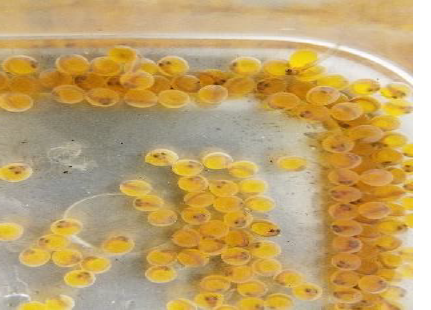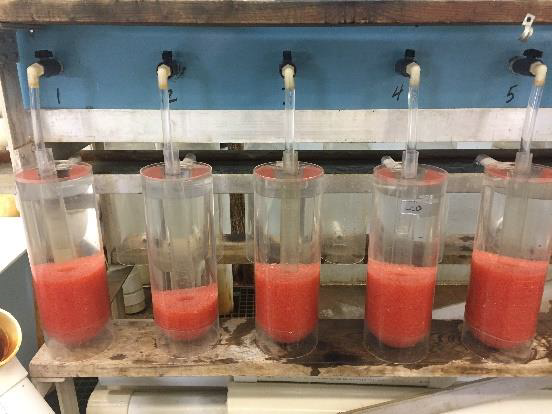The growing season for most of our fish is over for the year, and they have all been either put in their winter homes in their overwintering ponds, or a few species are kept a watchful eye over the entire winter in several of our culture buildings. The staff has a very slight breather to begin maintenance on our streamside rearing units, nets and fish culture equipment, and then are hard at it again as our cold water species of fish eggs arrive at the hatchery in December and January. These join our lake trout eggs at the station in their perspective separate areas, an isolated to reduce the risk of cross species disease transmission. The lake trout have been on board since early October, arriving from New York and held in quarantine, being a relative unknown as far as fish health status is concerned. These eggs came from the wild and will remain here growing into 10-12 inch fish and experiencing 3 fish health exams before being safely moved to FWS captive broodstock stations. Here they will produce millions of eggs yearly to be stocked as fingerlings to restore lake trout in 4 of the 5 Great Lakes. Our brook trout eggs, received from Iron River (WI) National Fish Hatchery, will be grown to 9 inches and released in Lake Superior to help restore the “coaster” brook trout, which can grow much larger than the inland stream brook trout. Then follows the Rainbow trout, a great sport fish in its own right. Most of the Rainbows are stocked in Wisconsin’s Fort McCoy Army Base and tribal waters to increase sport fishing opportunities. We also save some back for our Youth Fishing and Veterans and Differently-Abled Fishing events. So much for a winter break. The fish keep coming, and we are thankful for the opportunity to contribute to the FWS mission of Conserving the Nations Aquatic Resources for the Continuing Benefit of the American Public.
By: Doug Aloisi
Rainbow Trout, Brook Trout and Lake Trout eggs in a jar and container. Photo credit: USFWS



